2021 Waec Biology practical specimen Answer: If you are a candidate who is in search of a 2021 Waec biology practical specimen answer then you are at the right website because we try to make sure all our audience study hard to pass with proper information.
Nkedugists don’t charge any fee for providing help or services to our audience, the only thing is to bookmark or subscribe to our website for you to have the latest updates. let get started with the 2021 Waec biology practical specimen answer.
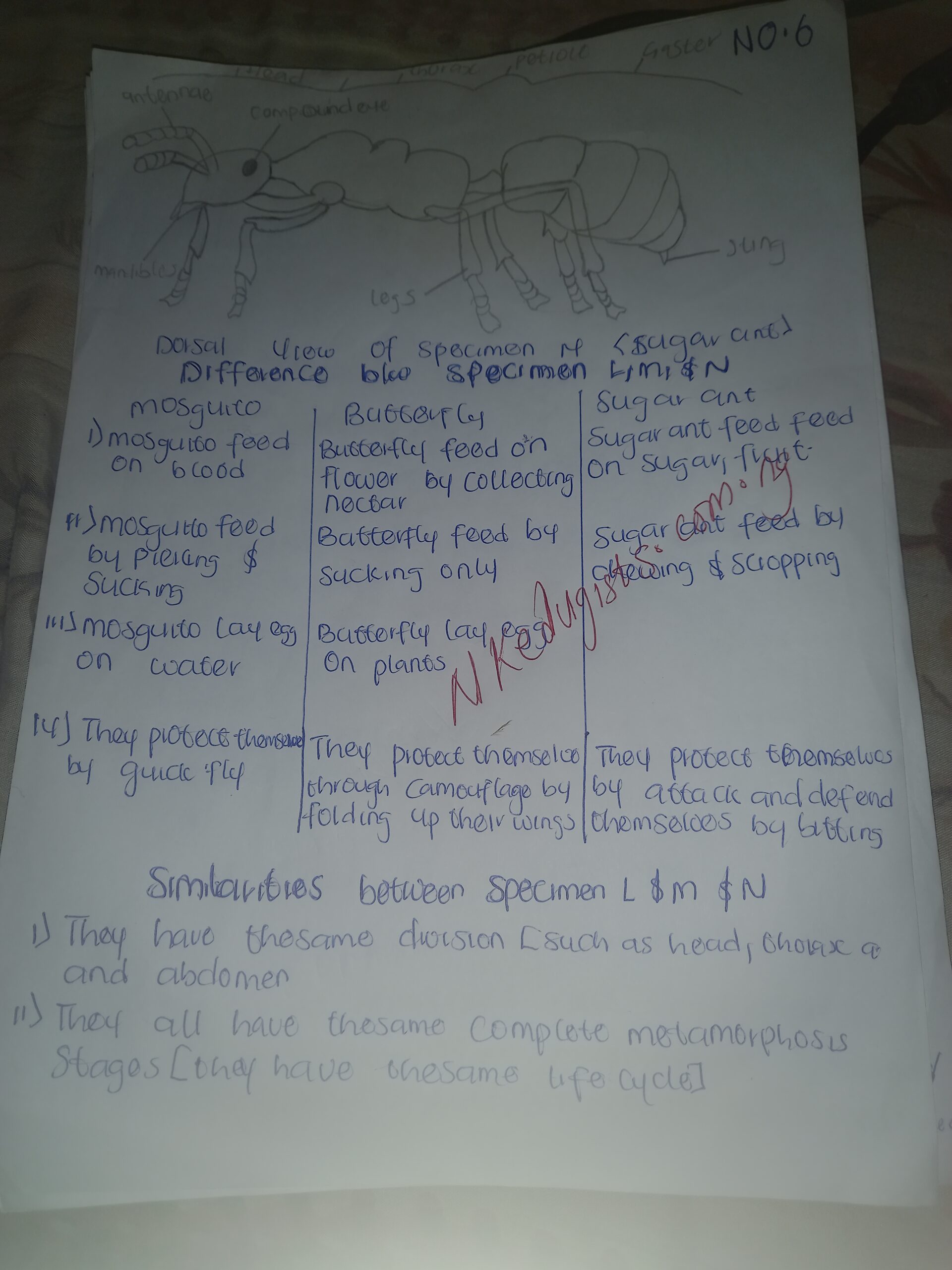
Related Article For You:
- 2021 Waec Biology Practical Specimen For All Waec Candidates Released
- 2021 Physics Chemistry Practical Specimen For all Waec Candidates
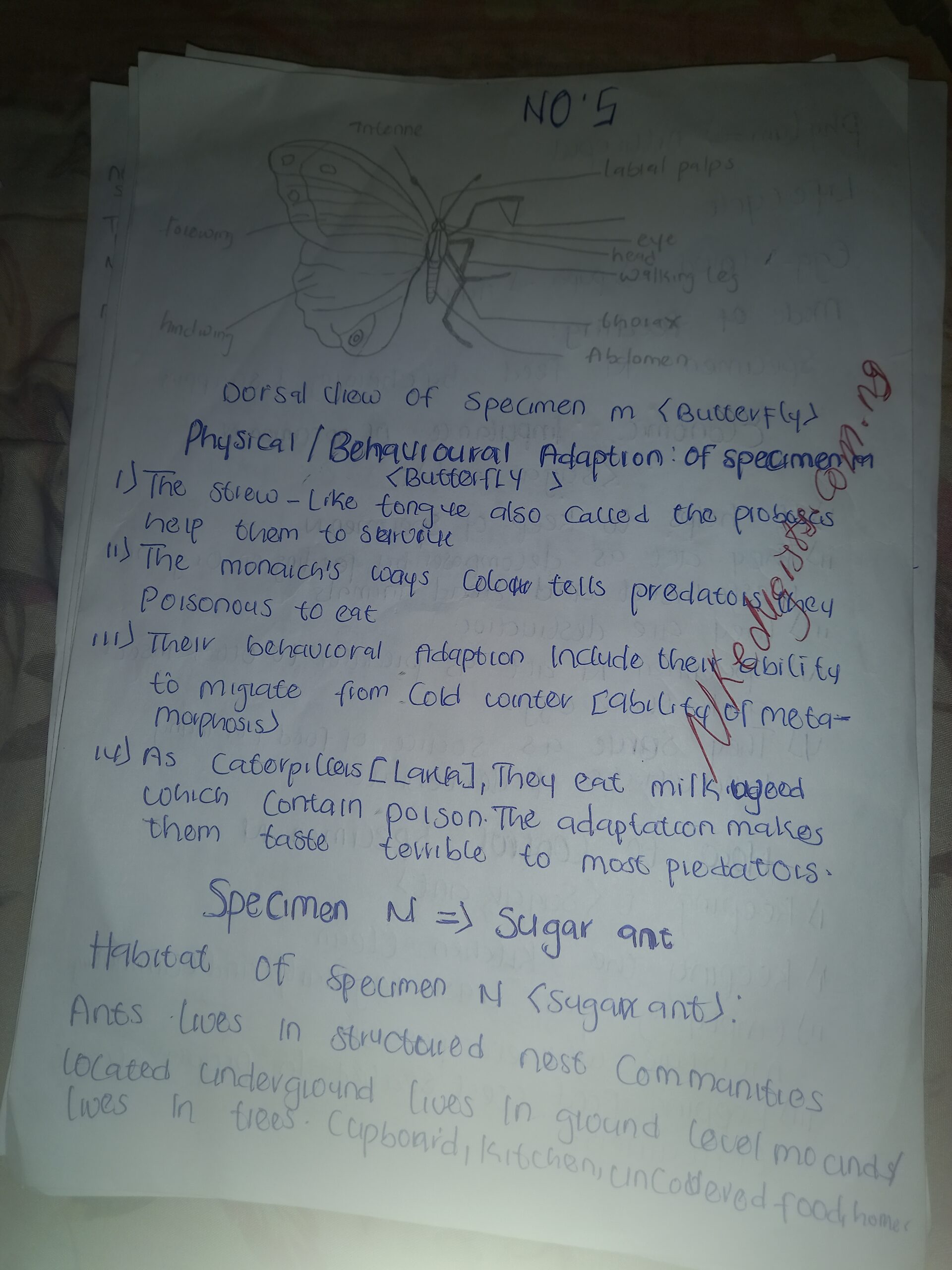
Specimen A: Cervical Vertebra Mammal
Location of Specimen A
These are endoskeleton that is found in the neck region of mammals in man, they are seven in number. The first cervical vertebra is called the atlas while the second is called the axis, the third to seven bones are the normal cervical bones.
Characteristics of Atlas Specimen A C1
- It has a flat and broad transverse process
- The neural Spine is very short or Absent.
- The centrum is Absent
- It has a vertebraterial canal for the passage of blood vessels
Characteristics of Atlas Specimen A C2
- It has a broad and flat centrum
- It has a vertebraterial canal
- It articles with the atlas through the odontoid process
Characteristics of Normal Specimen A C7
- The C7 may process cervical ribs
- C7 formen may transmit the posterior vertebral Vein ( if doubled)
Functions Of the Axis
- It allows the head turned easily, I.e twisting of the head
- It has a pair of the short transverse process
- There is a large neural canal and neural arch
- A large cylindrical centrum is present
Function of Atlas
- It permits the nodding of the head
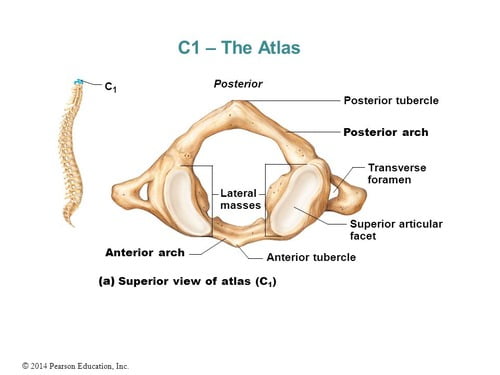
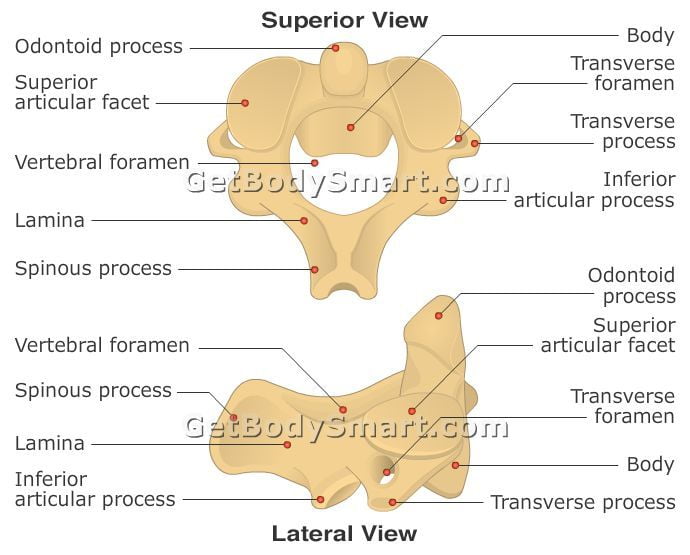
Specimen B: Thoracic Vertebra Mammal
Location: The thoracic vertebra is found in the chest region in man, they are twelve in numbers.
Characteristics of Specimen B
- The specimen B has a long and prominent neural spine when projects upward and backward
- It has a pair of the short transverse process
- There is a Waec Biology practical specimen Answer 2021large neural canal and neural arch
The function of Specimen B
- It aids the attachment of the ribs
- Muscles of the specimen are back and are attached to the neural spring
- It assists in breathing alongside the ribs
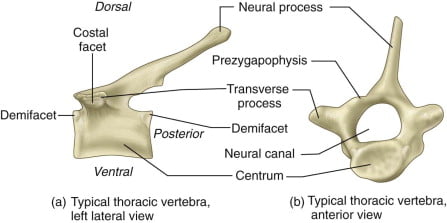
Structure of Specimen B
They are larger than the cervical but smaller than the lumbar vertebra in size, which is Heart Shaped.
Specimen C: Lumber Vertebra Mammal
Location: Specimen C are found in the upper abdominal Region
Characteristics of Specimen C
- It has a large, flattened transverse process
- It has a broad and flat neural spine
- It has a large and thick centrum
- It has well-developed pie and post-Zygapopheses
Functions of the Specimen C
- The lumber Vetebra Provides attachment for abdominal muscles
- They bear the considerable weight of the body
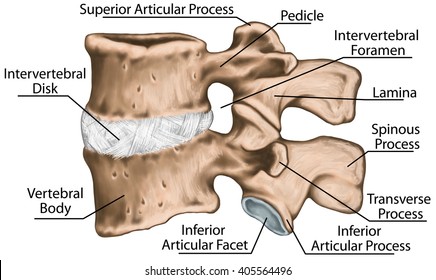
The shape of Specimen C
They are very large vertebra bodies that have kidney-shaped
Similarities between Specimen A, B, and C
- The presence of Neural canal
- The presence of the Neural spine
- Present of Facet
Differences between Specimen A, B, and C
| Specimen A | Specimen B | Specimen C | ||
| Absent of Centrum | Present of centrum | Present of Centrum | ||
| The Neural Spine is Absent | The present of Neural Spine | The present of neural Spine | ||
| It has a flat and broad transverse | It has a pair of the short transverse process | It has a large flattened transverse process | ||
Specimen L: Adult Mosquito ( freshly obtained)
Phylum: Specimen L is Arthropod
Class: Specimen L is Insecta
Habitat of Specimen L
Specimen lives in unkept, dirty overgrown bushes and stagnant water (pour some water in a container with a wide mouth. Leave it outside a house around which some bushes are growing. After some days, you are likely to see a freshly adult mosquito
Sex of Specimen L
Female Mosquito
Life History of Specimen L
Specimen L exhibits complete metamorphosis, I.e the fertilized eggs develop to lava, then larva to pupa, and finally to adult or imago.
The female mosquito lays about 2-7 batches of eggs, each batch consisting of about 100 eggs at a time which is lay inside a container holding water.
The entire life cycle from an egg to an adult takes approximately 8 – 10days. Pupae develop into flying mosquitoes in 2 – 3 days
What kind of metamorphosis does Specimen L undergo
It undergoes a complete metamorphosis which is egg – larvae – pupa – Adult
Mode of Feeding of Specimen L
The mosquito has a unique mouthpart modified for piercing and sucking blood.
Economics Importance of Specimen L
- They serve as food for many species
- They transfer diseases
- They feed on blood
- They cause disaster to humans ( death)
Observable Features of Specimen L
- The presence of Abdomen/Abdominal segment; for digestion, excretion, and reproduction
- The presence of antenna; For sensitivity
- Present of wing/feathering hair; for a defense to flight
- Present of eye; for vision/sight/seeing
- Present of maxillary palp; use to taste the quality of the food
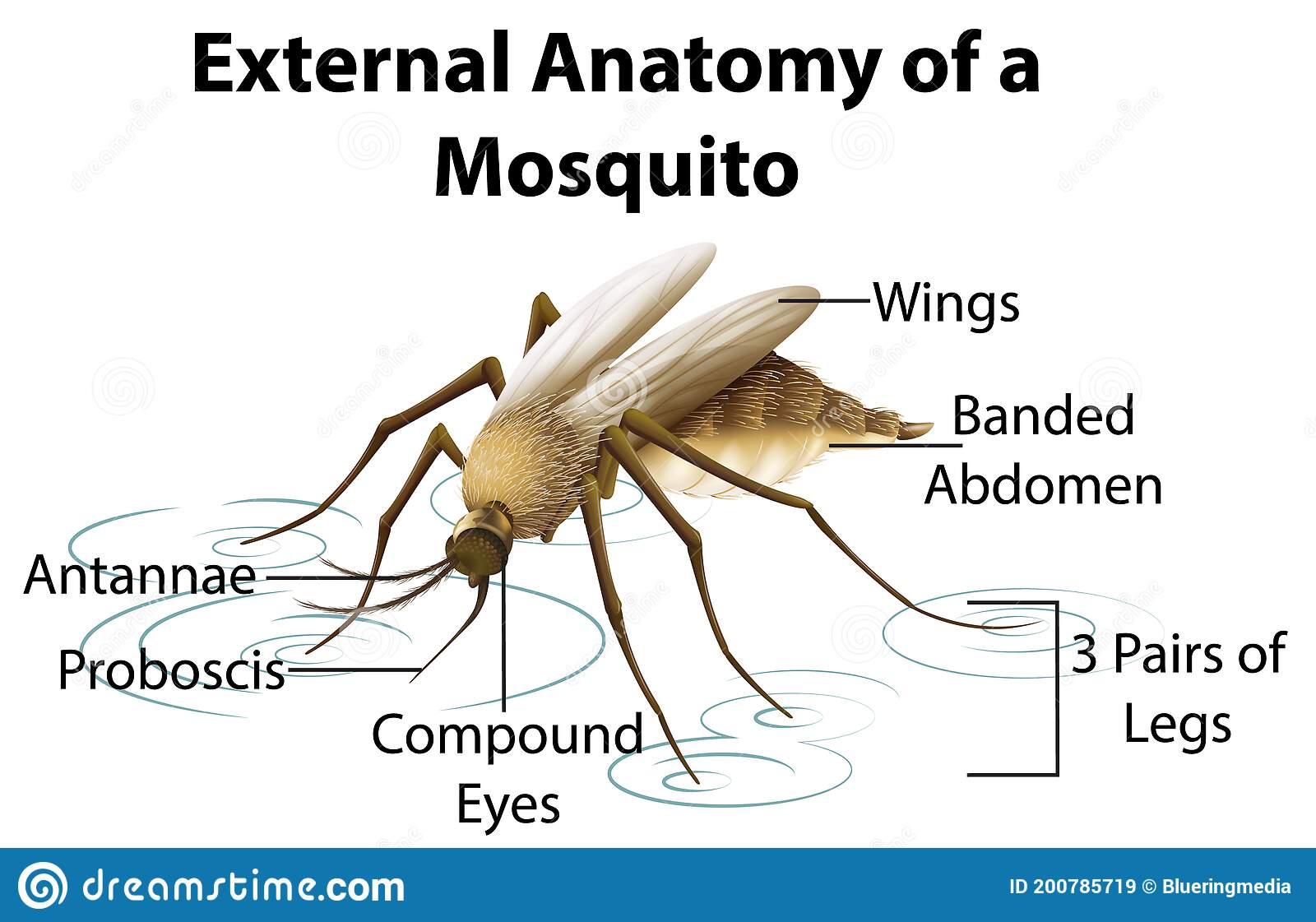
Diagram of mosquito (side view)
Ways to control Specimen L
- Stagnant water should not be allowed to exist near the dwelling place
- Insecticides should be sprayed on any stagnant water either the eggs, larvae, and pulpae
- Bushes around houses, schools, churches, hospitals, should be cleared
- It is advisable to sleep under a mosquito net in other to avoid adult mosquito bites
Specimen M ( Butterfly)
Habitat of Specimen M: They lives in quiet forest and pasture
Phylum: Specimen M is Arthropod
Class: Specimen M is Insecta
Life History of Specimen M
Specimen M exhibits, complete metamorphosis ad they undergo four stages of metamorphosis which are egg – larvae – pupa – Adult
Mode of Feeding of Specimen M
The specimen has a unique mouthpart modified which is used in sucking the nectar of flowers.
Economic Importance of Specimen M
- They serve as food to some species mostly in the food chain
- They play important role in pollinating flowers ( pollination of flowers)
- They feed on flowers by sucking the nectar of flowers
Observable Features of Specimen M
- The presence of Abdomen/Abdominal segment; for digestion, excretion, and reproduction
- The presence of antenna; For sensitivity
- Present of wing/feathering hair; for camouflage
- Present of eye; for vision/sight/seeing
- Present of maxillary siphoning: For sucking/feeding
- The presence of legs; for locomotion
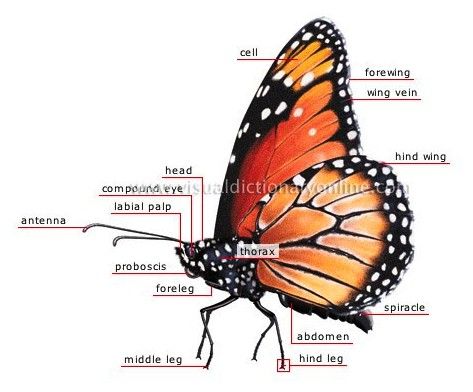
Physical / Behavioural Adaptation of Specimen M ( Butterfly)
- The strew like tongue also called the proboscis help them to survive
- The monarch’s ways color tells predators they are poisonous to eat
- Their behavioral Adaption include their ability to migrate from cold winter (the ability of metamorphosis)
- As caterpillars (lava), they eat milkweed which contains poison. The adaptation makes them taste terrible to most predators
Specimen N: ( Sugar Ant)
Habitat of Specimen N
Specimen N lives in a cupboard, kitchen, uncovered food, homes.
Phylum: Specimen N is Arthropod
Class: Specimen N is Insecta
Life History of Specimen N
Specimen M exhibits, complete metamorphosis ad they undergo four stages of metamorphosis which are egg – larvae – pupa – Adult
Mode of Feeding of Specimen N
The specimen N ( Sugar Ant feed by chewing and scrapping)
Economic Importance of Specimen N (sugar Ant)
- It helps to keep the environment clean
- They act as decomposers by feeding on organic waste like sugar, insect, and dead animals
- They are destructive
- Specimen N act as a predator to other insect and their eggs
- They serve as a source of food for some invertebrate and vertebrate
How to control Specimen N
- Keeping the kitchen clean
- Emptying your trash regularly and eliminating moisture whenever possible
- Keeping food well sealed in proper storage containers.
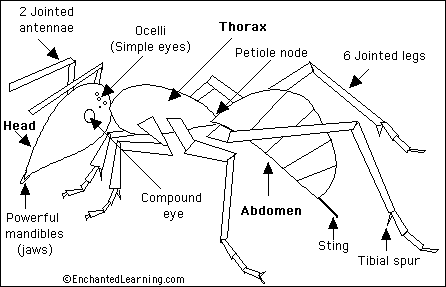
Diagram of Specimen N (Dorsal view)
Similarities between specimen L M and N
- They have the same division ( such as head, thorax, and abdomen)
- They all have the same complete metamorphosis stages ( they have the same life cycle)
Difference between Specimen L, M, and N
| Specimen L Mosquito | Specimen M Butterfly | Specimen N Sugar Ant |
| Mosquito feed on blood | Butterfly feed on by collecting nectar | Sugar Ant feed on sugar or fruit |
| Mosquito feed by piercing and sucking | Butterfly feed by sucking only | Sugar Ant feed by chewing and scrapping |
| Mosquito lay an egg on water | Butterfly lay eggs on plants | |
| They protect themselves by quick fly | They protect themselves through camouflage by folding their wings | They protect themselves by the attack and defend by bitting |
If you need us to help you with more updated information at the right time about Waec questions/answers, kindly subscribe or bookmark our website for us to provide you with it.
If actually, this formation on “Biology practical specimen Answer 2021” is helpful to you kindly share it with your friends and relative who also are students or aspirants using via Facebook, WhatsApp, Twitter, and Google

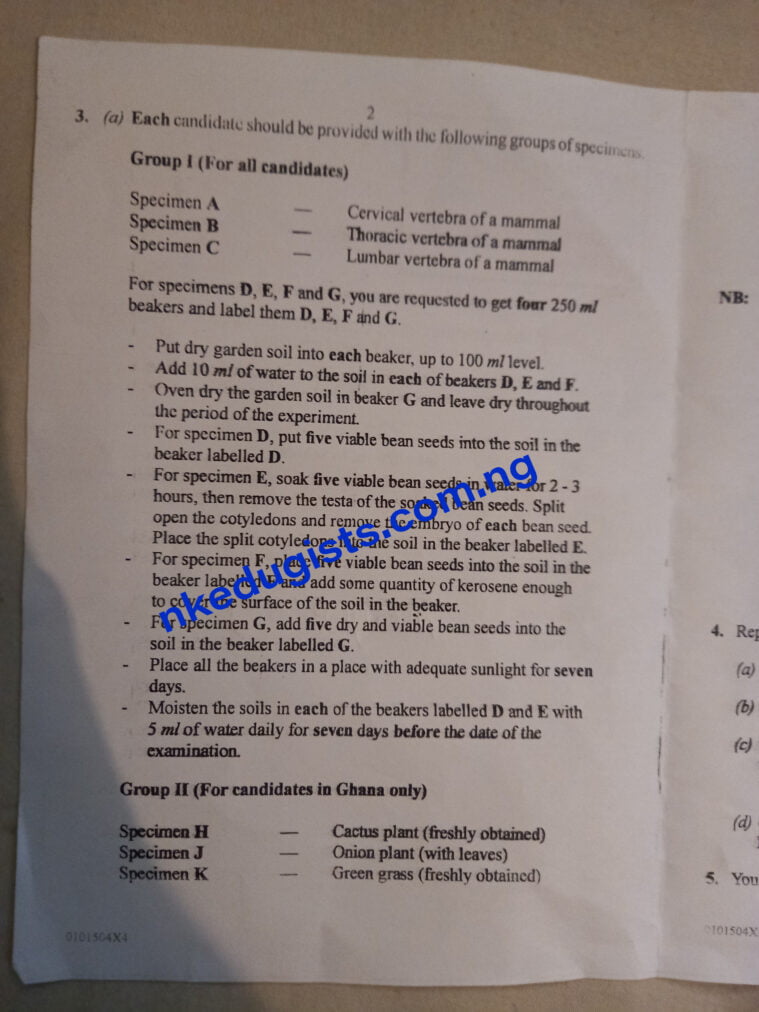
23 Comments
I have never seen a website like this God bless you
Thanks alot.May God help you too as you helped students.
Why you didnt solve The specimen for Ghanaian students
The name is nkedugists.com.NG not GH
Oh my God, I am really overwhelmed, what an amazing website, I sincerely thank you so much for this consistent help. I wish to apprised to you that; I am a waec candidates of this year, and going through your website, I don’t correct expo in exam, to be frank.
Please sir, we need biology objectives and essay thank u sir
Is this for nigerians also
In the difference between specimen L,M,N,ants lay eggs in the ant nest.
Thanks u I only want to ask if dat waec biology practical is the real answer
Thanks for your help and support.
Thanks very much
But please can I have the answers on my email please
You are full of wisdom and knowledge ,thanks for your assistant
You are full of wisdom and knowledge ,thanks for your assistant
Thanks very much ooo, may God add u more wisdom and knowledge
Thanks a lot
Ahhhh,God will bless you ijn
Thanks this website is helping greatly,, only I want to know if these are the real answer for today practical
These is good 👍
Too much knowledge
These is good 👍
Too much knowledge g
Wat of specimen D, E F and G please 🙏
Thanks to you sir, cause even if we are reading, how are we going to know the exact topic to read? More grace to you sir. But is this the real answer?
Yes it is the real answers
Thank you sir
But do also have physics practical questions and answers too?
l do have biology question only